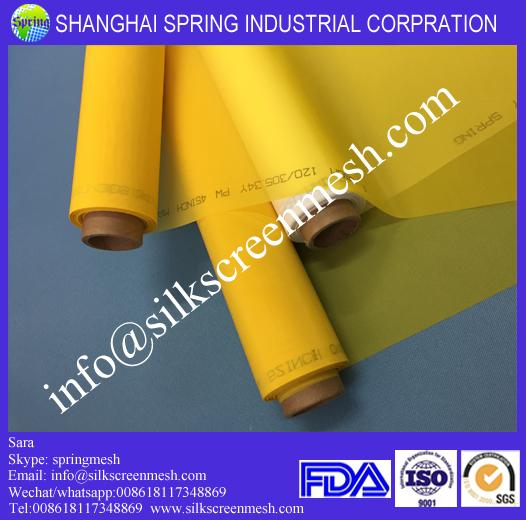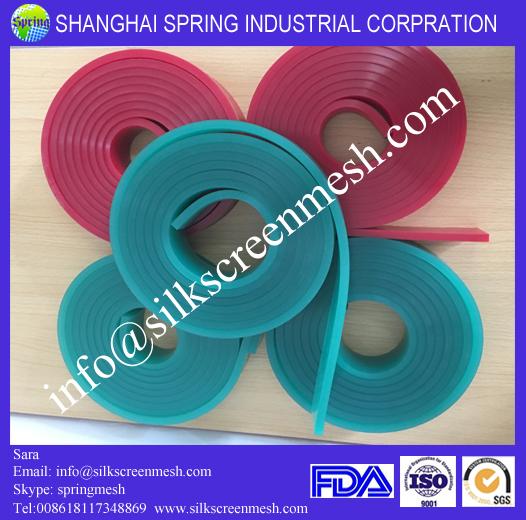Silk screen printing has excellent coverage, not only can be applied to the surface of transparent material printing, can also be used for printing gold ink, silver ink and hot stamping, which also extends the screen printing in the field of packaging and decoration applications. Here to talk about silk screen printing in the packaging of the trademark application.
First, prepress design and plate making
Packaging trademark screen printing process, basically can be divided into pre-press design, plate making, screen printing and Postpress 4 parts, pay attention to the operation of various processes, in order to ensure the quality of printing.

1. Prepress design
In the design of packaging labels, designers must be familiar with the plate and printing technology, as well as finishing technology, clearly design the packaging work is consistent with the plate, printing process requirements. For the design of general packaging trademarks, the requirements of simple and neat, suitable for printing; for some high-end packaging, or have special design requirements of products, Postpress must organize hand research, try to meet the requirements of customers and designers.
As the printing of packaging trademarks and the use of materials and general books and other printing technology is completely different, therefore, in the design of screen printing and packaging trademarks, packaging trademarks to give full consideration to the use of materials, printing process and so on.

2. Problems in the Design of Plate Making
Screen printing packaging trademarks, as screen printing and other printing of the different, the bottom of the production technology and design are not the same, the main attention should be paid to the following questions:
(1) multi-graphic design of joint fight.
A version of a map of more than fight together on the plate to the overlay accuracy must be high. Manual drying can easily lead to serious loss of outlets, overlay is not accurate; the use of co-drying machine to solve the problem of overprint accuracy, but the network loss problem can not be solved; color desktop system so that the past tedious hand-made easy to solve the loss of outlets And overprint are not allowed to the problem.
(2) hollow and mosaic pattern design.
Packaging trademark plate often encounter the need for hollow and inlaid process methods, especially the manuscript drawings need to print gold and silver, the printing plate must be made of hollow mosaic version, or likely to cause insufficient gold and silver ink, color darkening and other issues .
(3) box-shaped size design.
Die-cutting is an indispensable process of packaging trademark printing, die-cutting size requirements accurate, and box-shaped size design is guaranteed. Therefore, the plate should be based on customer-provided box-shaped size, as well as the thickness of the substrate paper, box shape, folding shape of the box with each other with the size of the variable processing to produce an accurate multi- Cutter-line version. At present, there are ready-made box-shaped design software abroad, it is understood that the domestic Founder, Tsinghua Unisplendour has developed a box-shaped design software.

3. Problems to be paid attention to in making screen printing plate by direct plate making
In the packaging trademark screen printing, the commonly used plate-making method is a direct plate-making method, the production process and should pay attention to the technical issues are as follows:
(1) the direct plate-making method of the basic characteristics of the process. Screen printing plate with the emulsion directly to the production process: Screen degreasing → screen drying drying → coated photosensitive glue → template drying → template to add glue → template drying → exposure → development → template drying → inspection revision.
(2) photosensitive emulsion coating points. The sensitive adhesive layer of the stencil must be uniform, the emulsion completely covers the screen and the adhesive layer on the printing surface should be thick. The stencil printing surface first glue 1 or 2 times, and then immediately in the scraping surface coating 2 to 4 times, wet wet scrape, followed by drying. After drying, re-apply 1-2 times on the printing surface to achieve the desired thickness of the photoresist layer. Each application must be done after the previous layer has dried. The number of times required by the printing and screen fineness of the decision.


 Your message must be between 20-3,000 characters!
Your message must be between 20-3,000 characters! Please check your E-mail!
Please check your E-mail!  Your message must be between 20-3,000 characters!
Your message must be between 20-3,000 characters! Please check your E-mail!
Please check your E-mail! 





